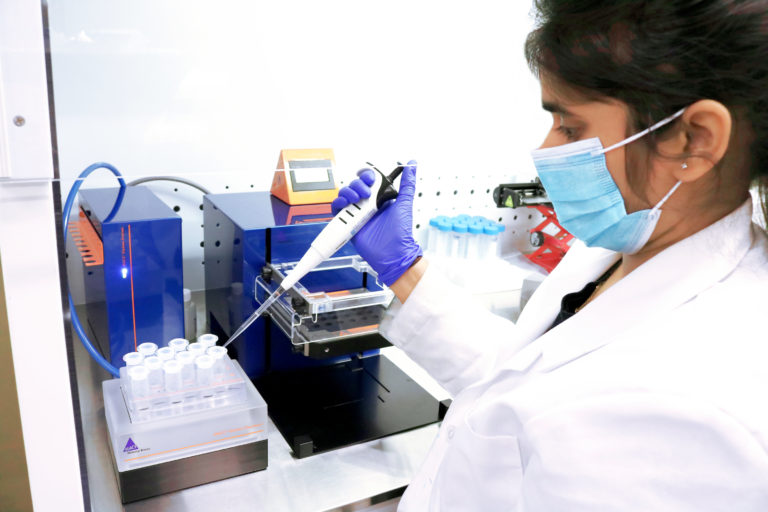Researchers and scientists at BioBridge Global are quietly working on everything from developing new assays to emulating the ways cells act in the body.
They’re coming up with novel solutions to laboratory issues. They’re working on treatments for traumatic injuries and chronic diseases and burns.
But amid the whirlwind of activity in the Headquarters Building, there are two BioBridge Global guiding principles behind all the science, says Dr. Rachel Beddard, BBG Medical Director and head of Research and Development.
“First of all, we want to meet needs-fill gaps in services and provide good value to our customers,” she says. “And then, we try to be really good stewards of our donations.”
Much of the work is at a stage where it can’t be shared publicly yet. But there are multiple success stories coming out of the 11-member team, which is made up of one group focused on assays and development and another focused more on research.
The development team, led by Zeke Butler, completed a remarkable 15 nucleic acid assays in support of QualTex cellular therapy testing and GenCure biomanufacturing in 2020.
“Fifteen assays is a lot in one year – to develop, write the SOP, transfer it to cellular therapy testing and collaborate with them,” says Scott Jones, Vice President, Scientific Affairs.
The assays meet the need of regenerative and cell therapy researchers.
“They will need safety assays used to detect the presence of infectious agents,” Butler said. “These assays validated by BBG R&D will ensure that the starting and final material or products are safe for potential patient use after rigorous clinical trials and FDA approval.”
The research team, led by Anand Srinivasan, just moved into a brand-new laboratory, Center for Innovations and Biodesign, on the first floor of the Headquarters Building.
The space they vacated will be renovated and dedicated to the development team for assay development, validation and clinical trial support.
Srinivasan and his team are working on new uses for donated cells, including expired platelets and type 0, A and B plasma, among other projects.
A large part of their work is an outgrowth of medical research done by the U.S. military, including the use of amniotic tissue as a “living bandage” for body wounds and eye injuries.
Even the more-theoretical research, including a remarkable and complex device the team has built to look into how the body reacts to cells, has a real focus, Jones says.
“We always are doing research with a specific goal in mind,” he says. “Anand does a lot of mathematical modeling. The whole concept is to do nothing without working out a formula first. We use the formula to narrow it all down to a handful of factors. “It’s working smarter, not harder.”
The BioBridge Global guiding principles are producing results and earning BBG new business.




